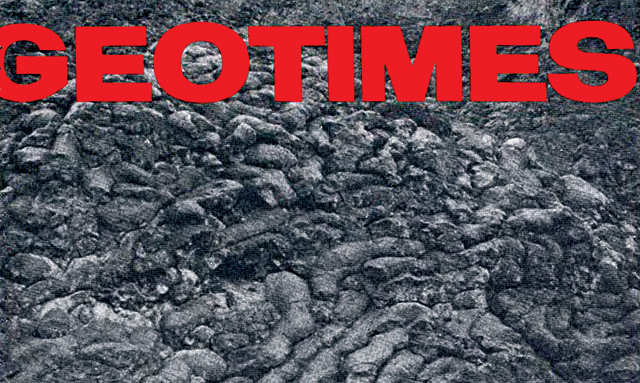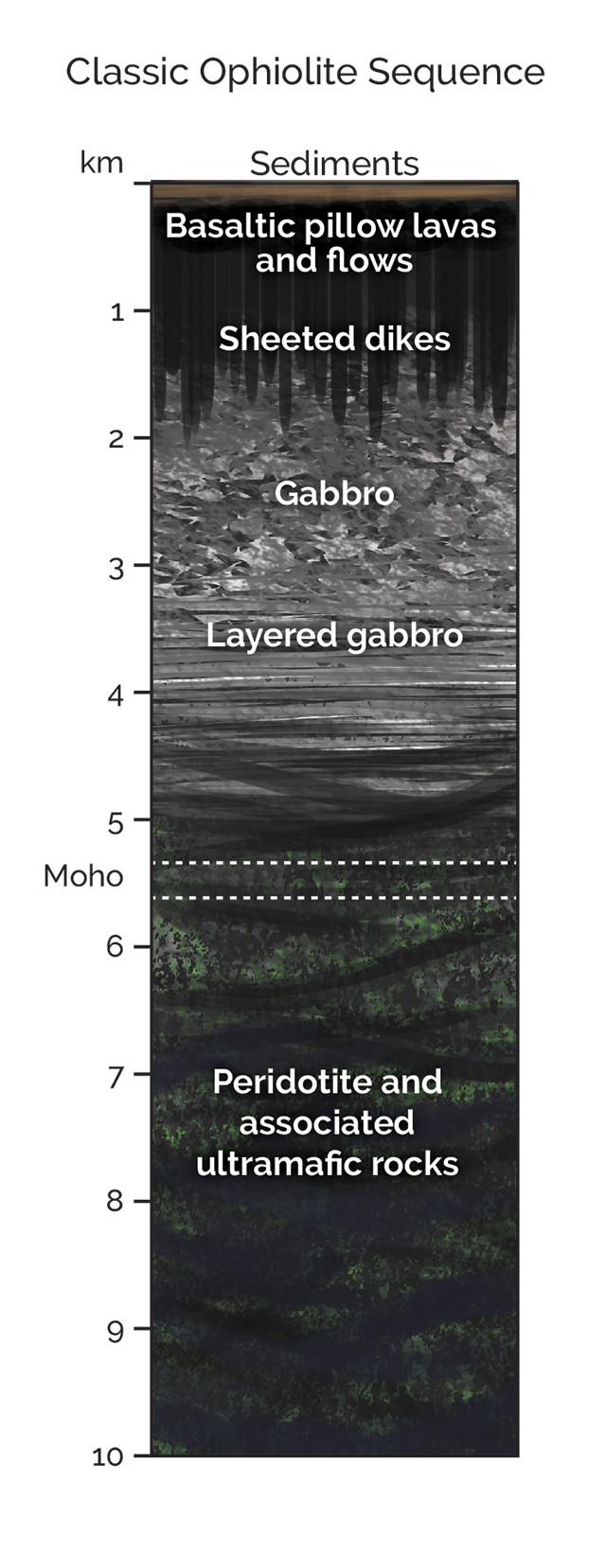
by Terri Cook and Lon Abbott Monday, April 9, 2018

One of the world's best exposures of pillow lavas graced the cover of Geotimes, EARTH's predecessor, in 1975. Credit: American Geosciences Institute.

The classic ophiolite sequence is a cross section through both the upper mantle and the oceanic crust. Credit: K. Cantner, AGI.
“Our loop drive through the high Hajar Mountains boasted excellent exposures of every oceanic crustal layer. One good exposure of the sequence of mantle rocks is found in the hills surrounding Oman’s capital city Muscat. They consist of a variety of peridotite called harzburgite, which is the pyroxene-depleted residue left behind after basaltic magma is extracted. That extracted magma forms the oceanic crust, whose characteristic rock sequence is, from bottom to top: 1) dark, layered gabbro overlain by massive gabbro (the intrusive equivalent of basalt that comprises solidified magma chambers); 2) sheeted basaltic dikes (the conduits that transported lava from the magma chambers up to the ocean floor); and 3) bulbous pillow lavas, which form when basalt erupts directly into seawater.
© 2008-2021. All rights reserved. Any copying, redistribution or retransmission of any of the contents of this service without the expressed written permission of the American Geosciences Institute is expressly prohibited. Click here for all copyright requests.